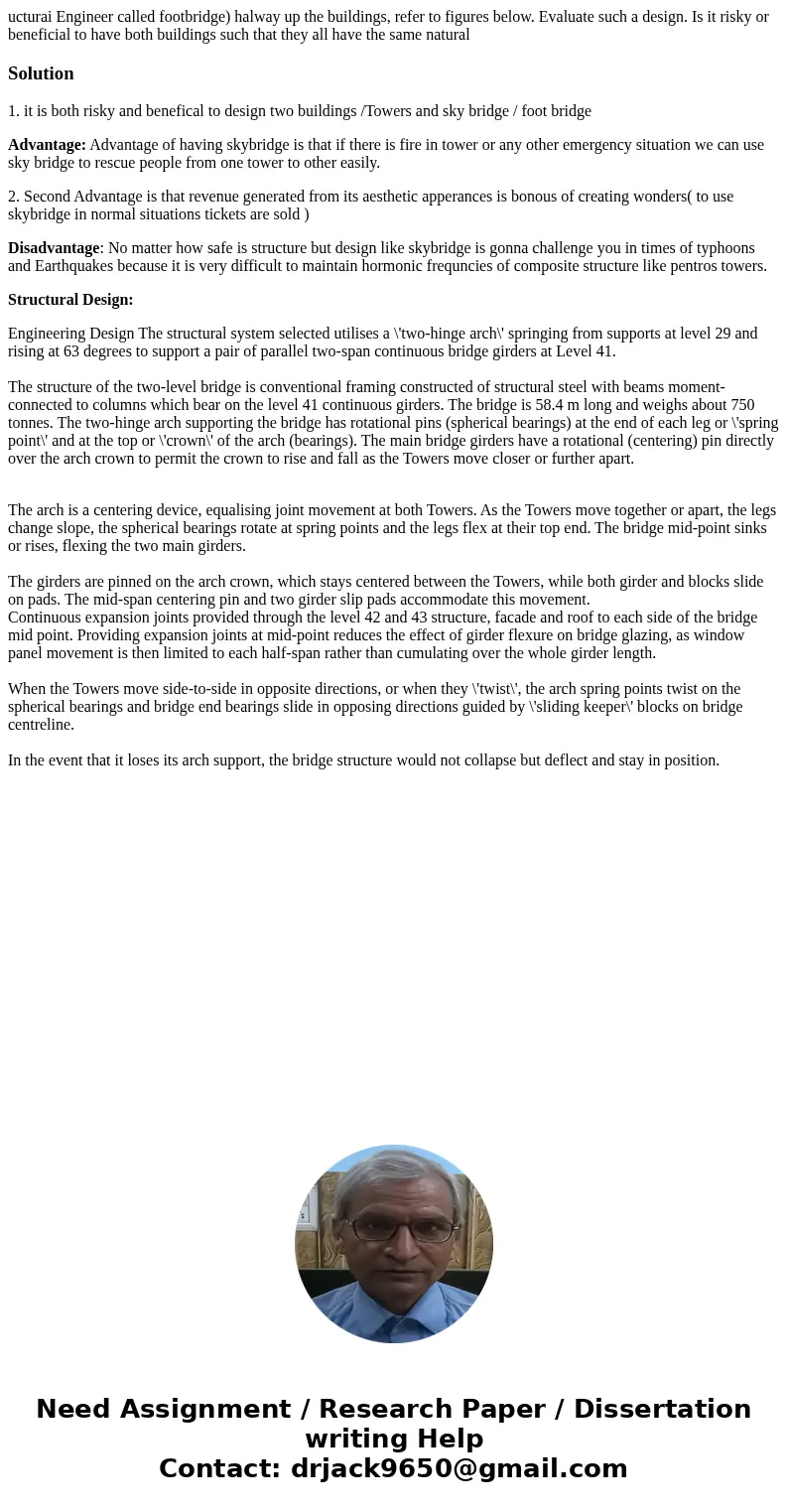ucturai Engineer called footbridge halway up the buildings r
Solution
1. it is both risky and benefical to design two buildings /Towers and sky bridge / foot bridge
Advantage: Advantage of having skybridge is that if there is fire in tower or any other emergency situation we can use sky bridge to rescue people from one tower to other easily.
2. Second Advantage is that revenue generated from its aesthetic apperances is bonous of creating wonders( to use skybridge in normal situations tickets are sold )
Disadvantage: No matter how safe is structure but design like skybridge is gonna challenge you in times of typhoons and Earthquakes because it is very difficult to maintain hormonic frequncies of composite structure like pentros towers.
Structural Design:
Engineering Design The structural system selected utilises a \'two-hinge arch\' springing from supports at level 29 and rising at 63 degrees to support a pair of parallel two-span continuous bridge girders at Level 41.
The structure of the two-level bridge is conventional framing constructed of structural steel with beams moment-connected to columns which bear on the level 41 continuous girders. The bridge is 58.4 m long and weighs about 750 tonnes. The two-hinge arch supporting the bridge has rotational pins (spherical bearings) at the end of each leg or \'spring point\' and at the top or \'crown\' of the arch (bearings). The main bridge girders have a rotational (centering) pin directly over the arch crown to permit the crown to rise and fall as the Towers move closer or further apart.
The arch is a centering device, equalising joint movement at both Towers. As the Towers move together or apart, the legs change slope, the spherical bearings rotate at spring points and the legs flex at their top end. The bridge mid-point sinks or rises, flexing the two main girders.
The girders are pinned on the arch crown, which stays centered between the Towers, while both girder and blocks slide on pads. The mid-span centering pin and two girder slip pads accommodate this movement.
Continuous expansion joints provided through the level 42 and 43 structure, facade and roof to each side of the bridge mid point. Providing expansion joints at mid-point reduces the effect of girder flexure on bridge glazing, as window panel movement is then limited to each half-span rather than cumulating over the whole girder length.
When the Towers move side-to-side in opposite directions, or when they \'twist\', the arch spring points twist on the spherical bearings and bridge end bearings slide in opposing directions guided by \'sliding keeper\' blocks on bridge centreline.
In the event that it loses its arch support, the bridge structure would not collapse but deflect and stay in position.

 Homework Sourse
Homework Sourse